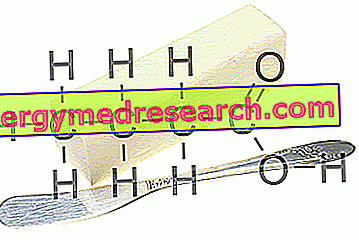Characteristics and content in foods
Butyric acid is a saturated fatty acid, not essential, with four carbon atoms; it is found mainly in the milk of ruminants (2-4%), and only in traces in that of women; it is therefore rich in butter and dairy products in general.
Due to its low molecular weight, butyric acid is volatile and gives off a characteristic odor, not exactly pleasant. Its formation following the bacterial degradation of cutaneous triglycerides, contained in the sebum and in the apocrine secretion, is partly responsible for the body odor and bromidrosis, or (excessive) "sweat" smell.
Butyric acid and bowel health
One thing that stinks is not necessarily harmful; at intestinal level, butyric acid has a paradoxical effect. While on the one hand, together with glutamine, it represents a very important energy source for the cells of the intestinal mucosa, promoting its replication, on the other it inhibits the proliferation of cancer cells, with a possible protective effect against colon cancer.

Food Integration Strategies
The possible integration can be made through its salts, such as those of calcium or magnesium (calcium butyrate, magnesium butyrate). However, direct dietary intake is not very important, given that butyric acid is easily produced in the colon by microbial fermentation of indigestible carbohydrates. To increase the intake of this precious nutrient it is therefore sufficient to ingest the right amount of fiber daily (30 grams / day in the adult). In this sense, it has proved particularly useful the resistant starch (which is formed in stale bread or in pasta left to cool), while on the supplementary side, to increase the synthesis of butyric acid, psyllium seeds, pectin, are useful. oat bran and fiber supplements in general.



